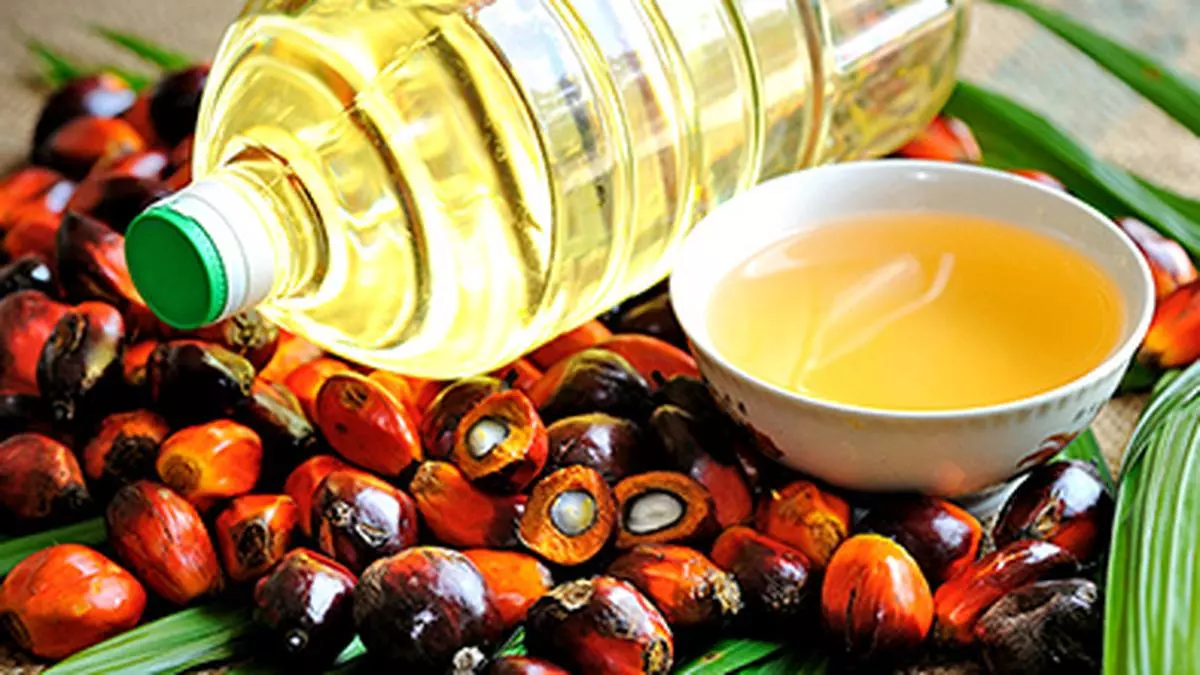Palm oil meet outlines plans to increase area by additional 0.6 m hectares by 2025-26
Plans were outlined to expand oil palm cultivation area by an additional 0.6 million hectares by 2025-26 at a seminar on palm oil in Indore on Friday.
Jointly organised by Solidaridad, Asian Palm Oil Alliance (APOA), and Solvent Extractors’ Association of India (SEA), the seminar titled ‘Palm Oil – Transforming Perceptions for Health and Nutrition’ also discussed potential health benefits associated with palm oil consumption.
To meet the requirements of the country, the seminar outlined plans to expand oil palm cultivation area by an additional 0.6 million hectares by 2025-26, aiming for a total of 1 million hectares.
Projections at the seminar indicated that crude palm oil production could reach 1.12 million tonnes (mt) by 2025-26 and further increase to 2.8 mt by 2029-30, marking a substantial step towards India’s goal of self-sufficiency in edible oil production.
Addressing demand gap
Speaking on the occasion, BV Mehta, Executive Director of SEA, said India’s approximate annual import of 9 mt of palm oil underscores the critical need to improve local production. With palm oil consumption surpassing 38 per cent, and soyabean oil (21 per cent), mustard oil (14 per cent), and sunflower oil (12 per cent) following closely, there is a pressing gap that must be addressed through enhanced local cultivation and support for Indian farmers. “As leaders in the edible oil industry, we are committed to raising the minimum selling price of palm oil to benefit our farmers and strengthen domestic production,” he said.
Sougata Niyogi, Chief Executive Officer, Oil Palm Business, Godrej Agrovet, said the National Mission of Edible Oils – Oil Palm is a step in the right direction for the country to reduce the import of edible oil. With a potential to yield 3-4 tonnes per hectare per year, it is one of the highest yielding crops compared to all vegetable oil seed crops. It requires less water when compared to other crops such as sugarcane and paddy, and enables farmers to have an assured source of income for more than 20 years in addition to alternate source of income through intercropping. Additionally, with only agricultural land permitted for growing the crop, oil palm also aids in increasing the biodiversity in the region, Niyogi said.
Aiming at change
Stating that India is committed to becoming self-sufficient in edible oil production, Atul Chaturvedi, Chairman of APOA, said palm oil has been a staple in various food and non-food products in India for centuries. However, misleading reports about its impact on health, nutrition and the environment have surfaced in recent years, causing harm to farmers, especially smallholders and negatively affecting Indian economy, he said, adding, this seminar aims to change public perceptions about palm oil by presenting scientifically accurate information.
Shatadru Chattopadhyay, Managing Director of Solidaridad Asia, said, “We are actively engaged in promoting sustainable practices in the palm oil sector through initiatives such as the India Palm Oil Sustainability (IPOS) standards platform. Despite its pivotal role, palm oil faces negative perceptions fuelled by myths regarding its environmental and health impacts. These misconceptions not only harm the industry’s reputation but also affect the Indian economy, particularly impacting palm oil farmers and smallholders. Our efforts focus on dispelling these myths and promoting accurate information to support both sustainable palm oil production and the livelihoods it sustains.”
Ajay Jhunjhunwala, President of SEA said, “We are committed to promoting sustainable practices in the Indian palm oil industry. By encouraging farmers to adopt the IPOS Standard, we aim to ensure that our agricultural practices are environmentally friendly and socially responsible. We urge companies to support this initiative by purchasing palm oil that meets these standards.”
